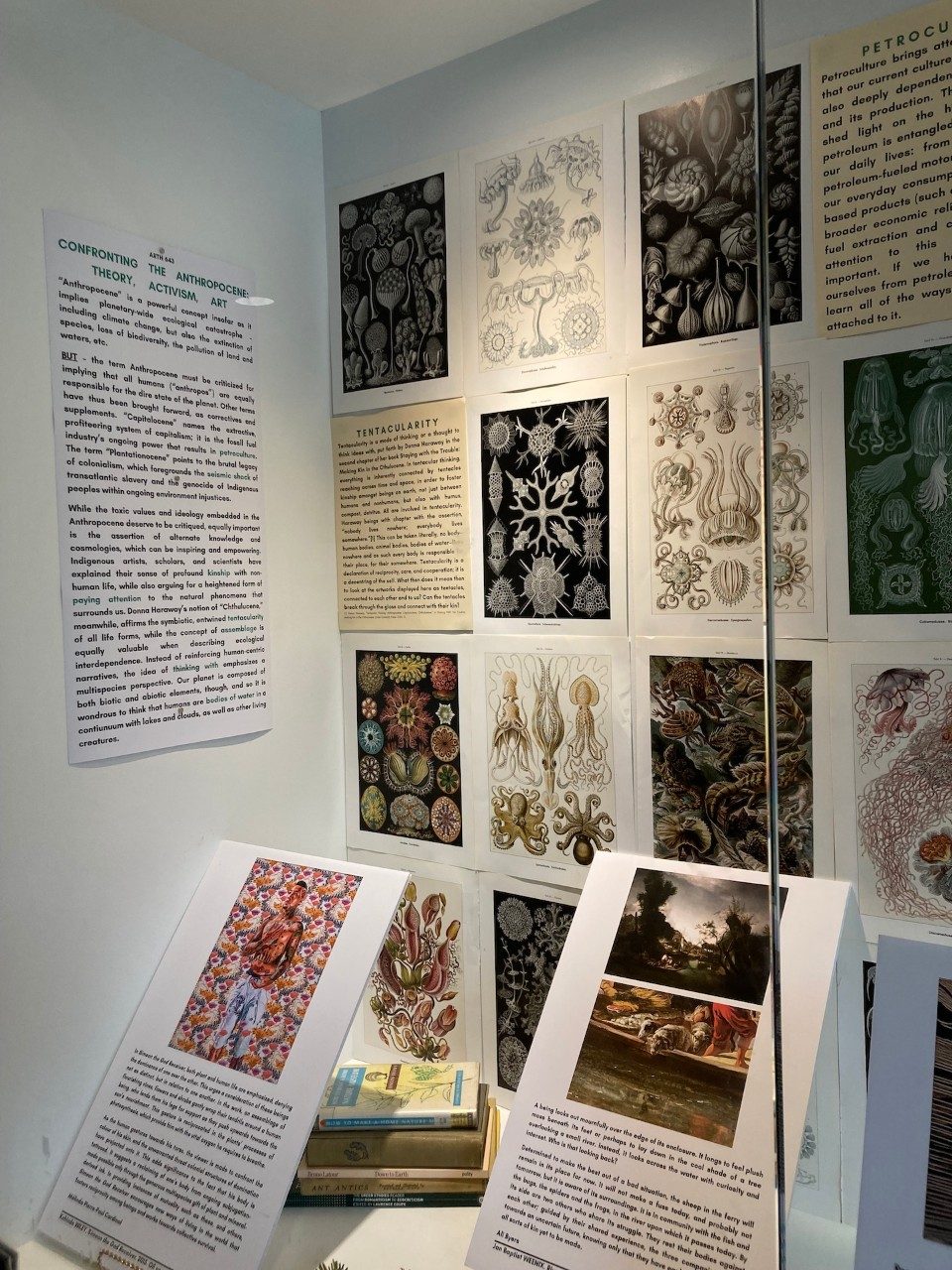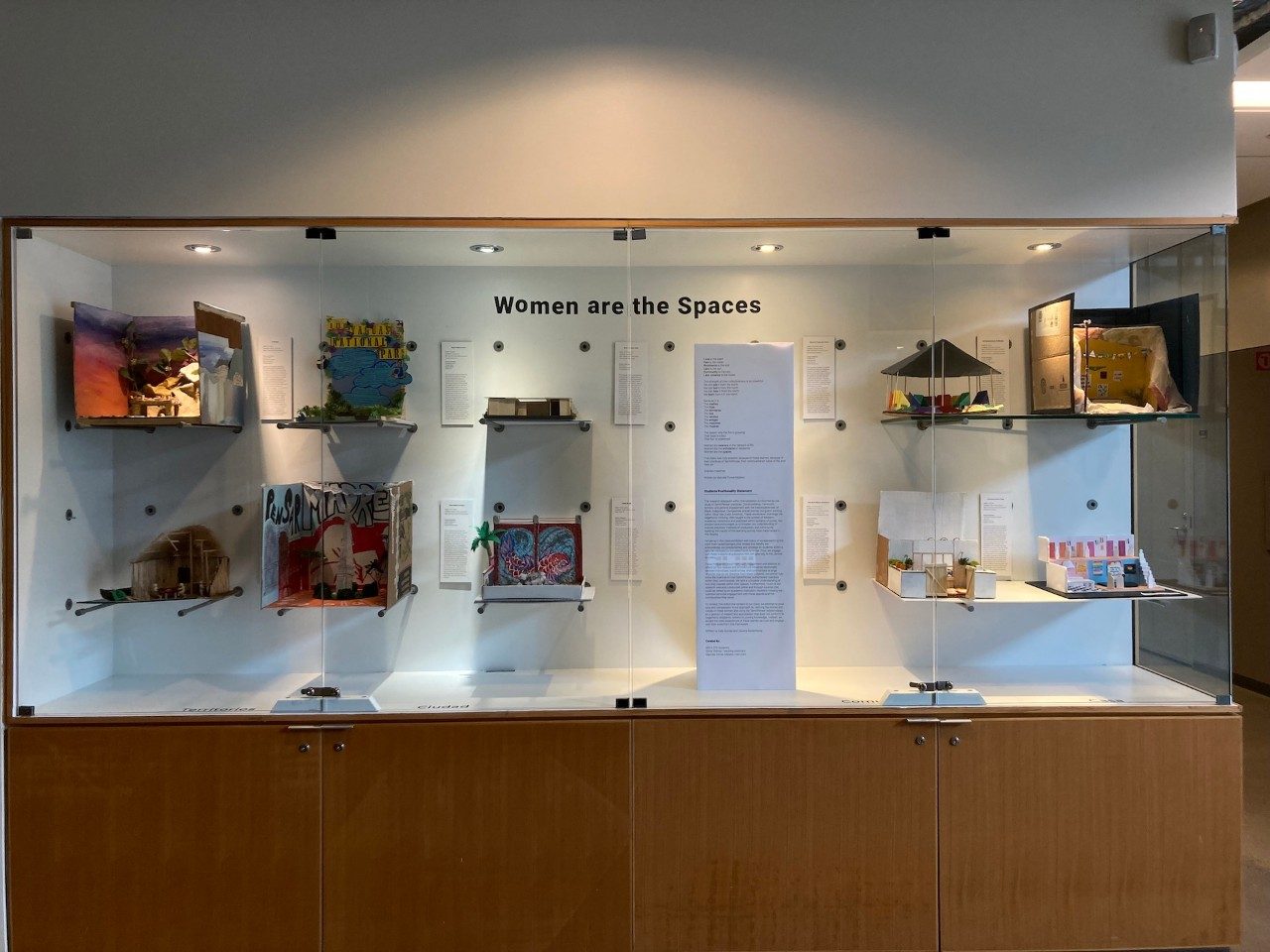VITRINE
The Art History Vitrine hosts month-long exhibitions dedicated to the public expression of art historical research, methods, and objects of study. Since 2006, professors and graduate students have curated installations in this display cabinet on themes as varied as Canadiana, print culture, postcards, as well as architectural drawings and models, often using original works of art by Concordia students.
Current exhibition

ARTH 643 CONFRONTING THE ANTHROPOCENE: THEORY, ACTIVISM, ART
Summer 2023
“Anthropocene” is a powerful concept insofar as it implies planetary-wide ecological catastrophe – including climate change, but also the extinction of species, loss of biodiversity, the pollution of land and waters, etc.
BUT – the term Anthropocene must be criticized for implying that all humans (“anthropos”) are equally responsible for the dire state of the planet. Other terms have thus been brought forward, as correctives and supplements. “Capitalocene” names the extractive, profiteering system of capitalism; it is the fossil fuel industry’s ongoing power that results in petroculture. The term “Plantationocene” points to the brutal legacy of colonialism, which foregrounds the seismic shock of transatlantic slavery and the genocide of Indigenous peoples within ongoing environment injustices.
While the toxic values and ideology embedded in the Anthropocene deserve to be critiqued, equally important is the assertion of alternate knowledge and cosmologies, which can be inspiring and empowering. Indigenous artists, scholars, and scientists have explained their sense of profound kinship with non-human life, while also arguing for a heightened form of paying attention to the natural phenomena that surrounds us. Donna Haraway’s notion of “Chthulucene,” meanwhile, affirms the symbiotic, entwined tentacularity of all life forms, while the concept of assemblage is equally valuable when describing ecological interdependence. Instead of reinforcing human-centric narratives, the idea of thinking with emphasizes a multispecies perspective. Our planet is composed of both biotic and abiotic elements, though, and so it is wondrous to think that humans are bodies of water in a contiunuum with lakes and clouds, as well as other living creatures.
Previous exhibition

Women are the Spaces
April 2023
Exhibition curated by students of ARTH 270, Winter 2023
Olivia Vidmar
Marcela Torres Molano
Love is the seed
Pain is the water
Resistance is the soil
Care is the sun
ommunity is the tree
Latin America is the forest
The strength of their collectiveness is so powerful we can see it from the North
We can feel it from the North
We can hear it from the North
We learn from it in the North
Because it’s the madres
The hijas
The hermanas
The tías
The vecinas
The amigas
The maestras
The mujeres
The reason why the fire is growing
That hope is intact
That fear is weakened
Women are weavers of the network of life
Women are the architects of resilience
Women are the spaces
This class was only possible because of those women, because of their practices of SentirPensar their communitarian ways of life, and their art
Gracias maestras
Written by Marcela Torres Molano
